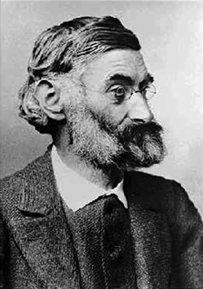Dear Abbe,
My colleagues, mostly ecologists and mineralogists, are always chiding me for being a laboratory worker instead of a field worker. Adding insult to injury, they usually harass me while I am doing microscopy on their samples. I have spent much time working in remote field locations, and preparing samples collected in the field for work in the microscopy lab. How can I open their eyes to microscopy as a field science?
Chided in Chillicothe
Dear Chided,
I understand your problem. Many people think that I am only a laboratory scientist. A great one, but still “only a laboratory scientist.” Nothing could be further than the truth. I built a field microscopy laboratory in Prof. Stümpke's rooms at the Darwin Institute in the Hy-yi-yi archipelago. I remember those days well, chasing Otopteryx with a reinforced butterfly net while dodging ferocious Tyrannonasus. This field work even led to what should have been a great breakthrough in digital image storage, if not for a verdammt supply clerk, who turned out to be an amateur magician. I was busy creating a novel from Prof. Stümpke's unpublished manuscripts and images of rhinogrades, which were sadly deteriorating. This was in the days of 540k floppy discs, and high-quality digital images were impossible to store. So, during a night of Schnapps-inspired arithmetizing, I realized the images were just numbers on a x by y Cartesian grid. So, write (x,y)n for the size of the grid image and the bit depth, and follow that with all the numbers strung together—all the x numbers in the first line, then stick on all the x numbers in the second line und so weiter until the yth line. Which gives an impossibly long number to write. Unless one uses tetration! Then suddenly a million or more digits becomes something like 317, which is very easy to write. And store on a measly 540k floppy drive. Unfortunately, the Schnapps-inspired arithmetizing continued into a Schnapps-inspired attempt to create a new flaming cocktail. All my notes on how to turn a gigantische Zahl into a winzige Anzahl turned out to be written on our amateur magician's supplied flash-paper and Voopf! everything went up in flames. No matter the quantity of Schnapps, I never have remembered how to calculate a tetration of a gigantische Zahl.
If you've ever taken a bad fall in the field, you can appreciate what “Schnapps-inspired” really means. If your colleagues chide you for your work in the field, contact Herr Abbe through his faithful assistant at johnshields59@gmail.com.





